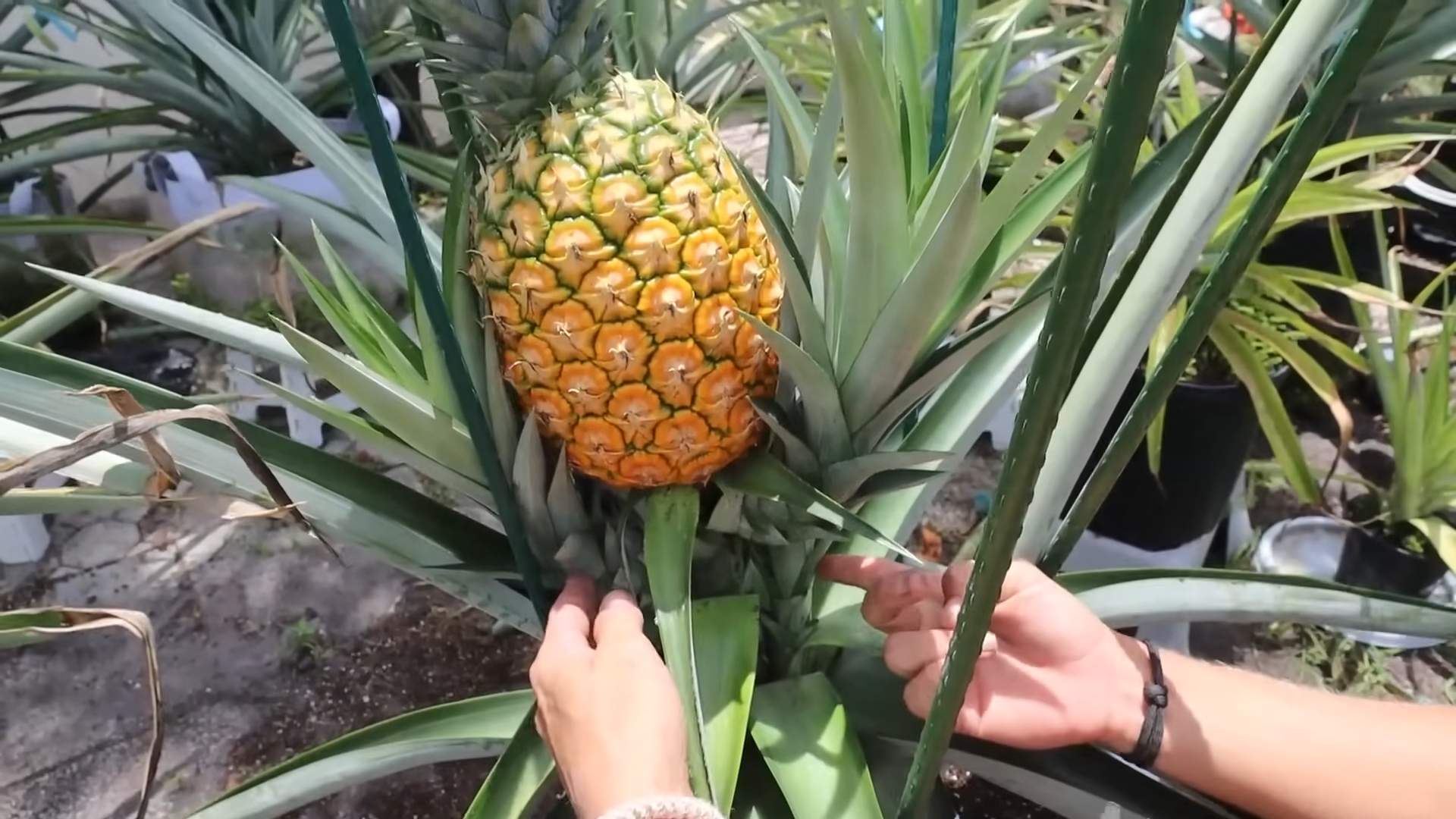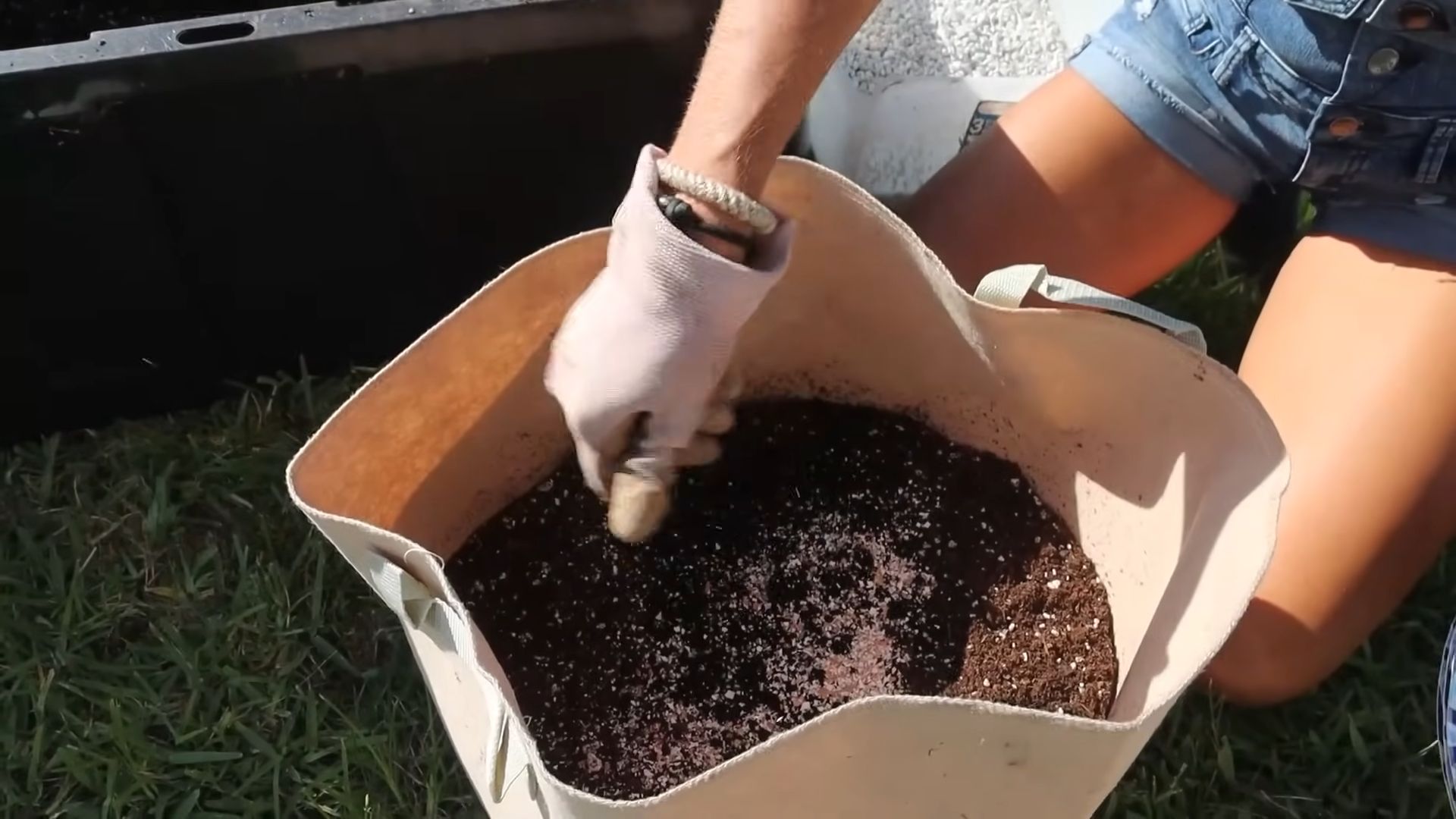Grow pineapples at home? Absolutely! Imagine plucking a juicy, sun-ripened pineapple straight from your own backyard. Sounds like a tropical dream, right? Well, it’s more attainable than you might think, and this DIY guide is your passport to pineapple paradise!
For centuries, pineapples have been symbols of hospitality and luxury. Originating in South America, they were once so prized that owning one signified wealth and status. Now, you don’t need a king’s ransom to enjoy these delicious fruits. You can cultivate your own little slice of the tropics, right in your living space.
Why should you embark on this DIY adventure? Because store-bought pineapples, while tasty, often lack the vibrant flavor of a freshly grown one. Plus, there’s immense satisfaction in nurturing a plant from start to finish. This isn’t just about getting a fruit; it’s about connecting with nature, learning a new skill, and adding a touch of the exotic to your everyday life. I’m going to show you some simple tricks and hacks that will make grow pineapples at home a fun and rewarding experience, even if you don’t have a green thumb!

Growing Pineapples at Home: A Tropical Treat You Can Cultivate Yourself!
Okay, so you want to grow pineapples at home? Awesome! It’s totally doable, and honestly, there’s something incredibly satisfying about harvesting a pineapple you nurtured from practically nothing. It takes patience, but trust me, the reward is worth it. I’m going to walk you through everything you need to know, from prepping your pineapple top to enjoying that sweet, homegrown fruit.
What You’ll Need:
Before we dive in, let’s gather our supplies. Here’s a list of what you’ll need to successfully grow your own pineapple:
* A fresh pineapple: Choose a ripe pineapple from the grocery store. Look for one with healthy, green leaves and no signs of rot. The fruit itself should smell sweet and fragrant.
* A sharp knife: A good, sharp knife is essential for cleanly removing the top of the pineapple.
* A container for rooting: You can use a glass jar, a plastic cup, or any container that can hold water and support the pineapple top.
* Potting mix: Use a well-draining potting mix specifically formulated for containers. A mix containing perlite or vermiculite is ideal.
* A pot: Choose a pot that’s at least 10 inches in diameter. Pineapples need room to grow!
* Water: Obviously!
* Optional: Rooting hormone: While not strictly necessary, rooting hormone can help speed up the rooting process.
* Gardening gloves: To protect your hands.
Preparing the Pineapple Top
This is the first crucial step. We need to get that pineapple top ready to root!
1. Twist or Cut off the Top: The easiest way is to firmly grasp the leaves of the pineapple top and twist it off the fruit. If it doesn’t come off easily, use your sharp knife to carefully cut the top off, leaving about an inch of fruit attached.
2. Remove Excess Fruit: This is important! Any remaining fruit will rot and can prevent the top from rooting. Carefully trim away all the fruit flesh from the base of the pineapple top. You want to expose the stem where the roots will emerge.
3. Peel Away Lower Leaves: Gently peel away several layers of the lower leaves from the base of the pineapple top. This will expose more of the stem and encourage root growth. You should aim to expose about 1-2 inches of the stem.
4. Let it Dry: This is a step many people skip, but it’s crucial! Allow the pineapple top to dry out for several days (3-7 days is ideal). This helps prevent rot. Place the top in a well-ventilated area, away from direct sunlight. You’ll know it’s ready when the cut end has formed a callus.
Rooting the Pineapple Top
Now comes the fun part – getting those roots to sprout!
1. Place in Water: Fill your container with water. Place the pineapple top in the water, ensuring that only the exposed stem is submerged. The leaves should remain above the water line.
2. Find a Sunny Spot: Place the container in a warm, sunny location. A windowsill that receives bright, indirect sunlight is perfect.
3. Change the Water Regularly: Change the water every few days to prevent algae growth and keep the water fresh.
4. Be Patient: Rooting can take several weeks, even months. Don’t get discouraged if you don’t see roots right away. Just keep the water fresh and the pineapple top in a sunny spot. You should start to see small roots emerging from the stem within 4-8 weeks.
Planting Your Pineapple
Once your pineapple top has developed a good root system (about 2-3 inches long), it’s time to plant it in soil!
1. Prepare the Pot: Fill your pot with well-draining potting mix.
2. Plant the Pineapple Top: Make a hole in the center of the potting mix and carefully plant the pineapple top, ensuring that the roots are covered with soil. The base of the leaves should be just above the soil line.
3. Water Thoroughly: Water the newly planted pineapple thoroughly, allowing the excess water to drain out of the bottom of the pot.
4. Mulch (Optional): Add a layer of mulch around the base of the pineapple plant to help retain moisture and suppress weeds.
Caring for Your Pineapple Plant
Now that your pineapple is planted, it’s time to provide it with the care it needs to thrive.
1. Sunlight: Pineapples need plenty of sunlight. Place your potted pineapple in a location that receives at least 6 hours of direct sunlight per day. If you live in a climate with harsh summers, you may need to provide some afternoon shade to prevent the leaves from scorching.
2. Watering: Water your pineapple plant regularly, allowing the soil to dry out slightly between waterings. Avoid overwatering, as this can lead to root rot. A good rule of thumb is to water when the top inch of soil feels dry to the touch.
3. Fertilizing: Pineapples are heavy feeders, so regular fertilization is essential. Use a balanced fertilizer (e.g., 10-10-10) every 2-3 months during the growing season (spring and summer). You can also use a liquid fertilizer more frequently, following the instructions on the label.
4. Temperature: Pineapples thrive in warm temperatures (between 65°F and 85°F). Protect your plant from frost and freezing temperatures. If you live in a cold climate, you’ll need to bring your pineapple plant indoors during the winter months.
5. Humidity: Pineapples prefer high humidity. If you live in a dry climate, you can increase the humidity around your plant by misting it regularly or placing it on a pebble tray filled with water.
Encouraging Fruiting
This is where the real patience comes in. It can take 1-3 years for a pineapple plant to produce fruit. Here are a few tips to encourage fruiting:
1. Ethylene Gas: Pineapples are stimulated to fruit by ethylene gas. You can encourage fruiting by placing an apple core near the base of the plant and covering it with a plastic bag for a few days. Apples release ethylene gas as they ripen.
2. Magnesium Sulfate (Epsom Salts): Some gardeners recommend applying magnesium sulfate (Epsom salts) to the soil to encourage fruiting. Dissolve 1 tablespoon of Epsom salts in 1 gallon of water and apply it to the soil every few months.
3. Patience, Patience, Patience: Seriously, the most important thing is patience. Just keep providing your pineapple plant with the care it needs, and eventually, it will reward you with a delicious fruit.
Harvesting Your Pineapple
You’ll know your pineapple is ready to harvest when it turns a golden-yellow color and has a sweet, fragrant aroma. The fruit should also feel slightly soft to the touch.
1. Cut the Pineapple: Use a sharp knife to cut the pineapple from the plant.
2. Enjoy! Let your homegrown pineapple ripen a bit more at room temperature if needed, then enjoy the fruits (literally!) of your labor.
Troubleshooting
Even with the best care, you might encounter some problems along the way. Here are a few common issues and how to address them:
* Rotting Pineapple Top: If your pineapple top starts to rot, it’s likely due to overwatering or poor drainage. Remove the rotting leaves and allow the top to dry out completely before trying to root it again.
* Yellowing Leaves: Yellowing leaves can be a sign of overwatering, underwatering, or nutrient deficiency. Adjust your watering schedule and fertilize your plant regularly.
* Lack of Fruiting: As mentioned earlier, it can take a long time for a pineapple plant to produce fruit. Make sure your plant is getting enough sunlight, water, and fertilizer. You can also try the ethylene gas trick to encourage fruiting.
* Pests: Pineapples can be susceptible to pests such as mealybugs and scale. Inspect your plant regularly and treat any infestations promptly with insecticidal soap or neem oil.
Final Thoughts
Growing pineapples at home is a rewarding experience that allows you to enjoy fresh, homegrown fruit. While it requires patience and attention to detail, the process is relatively simple and can be done in a variety of climates. With a little bit of care, you can transform a simple pineapple top into a thriving plant that produces delicious fruit for years to come. Good luck, and happy growing!

Conclusion
So, there you have it! Growing pineapples at home, while it might seem like a tropical fantasy, is surprisingly achievable and incredibly rewarding. It’s more than just a fun project; it’s a tangible connection to the natural world, a lesson in patience, and a source of immense satisfaction when you finally harvest your own homegrown fruit. Forget the store-bought pineapples, often shipped long distances and lacking that peak-freshness flavor. With a little effort and the right conditions, you can enjoy a pineapple bursting with sweetness, knowing you nurtured it from crown to core.
This DIY trick isn’t just about saving money (though that’s a definite perk!). It’s about experiencing the magic of propagation, understanding the life cycle of a plant, and adding a touch of the exotic to your home garden. Imagine the conversations sparked by your pineapple plant, the envy of your neighbors, and the delicious recipes you can create with your homegrown bounty.
But the best part? It’s adaptable! Feel free to experiment with different varieties of pineapples. The smooth cayenne is a classic choice, but explore other options like the sugarloaf or the red Spanish for unique flavors and textures. You can also adjust the growing medium to suit your local climate and soil conditions. Some gardeners swear by a mix of peat moss, perlite, and vermiculite, while others prefer a more organic blend with compost and coconut coir. Don’t be afraid to tweak the watering schedule based on your plant’s needs and the humidity levels in your area.
Consider using a terracotta pot for better drainage, or even try growing your pineapple in a raised garden bed for improved soil aeration. If you live in a colder climate, you can easily grow your pineapple in a container and bring it indoors during the winter months. Just make sure it gets plenty of sunlight!
This DIY pineapple growing method is a must-try because it empowers you to take control of your food source, reduces your carbon footprint, and provides a unique and engaging gardening experience. It’s a project that’s perfect for beginners and seasoned gardeners alike.
We wholeheartedly encourage you to give this DIY trick a try. Don’t be intimidated by the perceived difficulty. With a little patience and attention, you’ll be well on your way to harvesting your own delicious, homegrown pineapples. And most importantly, we want to hear about your experience! Share your photos, tips, and challenges in the comments below. Let’s create a community of pineapple enthusiasts and learn from each other’s successes (and occasional setbacks!). Your insights could help other aspiring pineapple growers achieve their tropical dreams. So, grab a pineapple, save the crown, and get ready to embark on a rewarding gardening adventure. Happy growing!
Frequently Asked Questions (FAQ)
How long does it take to grow a pineapple from a crown?
Growing a pineapple from a crown is a patience game! Generally, it takes anywhere from 2 to 3 years for a pineapple plant to mature and produce fruit. The exact timeframe depends on several factors, including the variety of pineapple, the climate, the amount of sunlight it receives, and the overall care it gets. Don’t get discouraged if you don’t see fruit right away. The initial stages involve root development and vegetative growth, which are crucial for a healthy and productive plant.
What kind of soil is best for growing pineapples?
Pineapples thrive in well-draining, slightly acidic soil. A pH level between 5.5 and 6.5 is ideal. A good potting mix for pineapples can be created by combining equal parts of peat moss, perlite, and vermiculite. This mixture provides excellent drainage and aeration, which are essential for preventing root rot. You can also amend your soil with organic matter like compost or well-rotted manure to improve its fertility and water retention. Avoid heavy clay soils, as they tend to retain too much moisture and can lead to root problems.
How much sunlight do pineapples need?
Pineapples are sun-loving plants and require at least 6 hours of direct sunlight per day. The more sunlight they receive, the better they will grow and the more likely they are to produce fruit. If you’re growing your pineapple indoors, place it near a south-facing window where it can get the most sunlight. You may also need to supplement with artificial grow lights, especially during the winter months. Insufficient sunlight can result in slow growth, weak stems, and a lack of fruit production.
How often should I water my pineapple plant?
Water your pineapple plant regularly, but avoid overwatering. Allow the soil to dry out slightly between waterings. During the growing season (spring and summer), you may need to water more frequently than during the dormant season (fall and winter). A good rule of thumb is to water deeply when the top inch of soil feels dry to the touch. Be sure to water the soil around the base of the plant, as well as the central cup formed by the leaves. This cup acts as a reservoir and helps to keep the plant hydrated.
How do I fertilize my pineapple plant?
Pineapples are heavy feeders and benefit from regular fertilization. Use a balanced fertilizer with a ratio of 10-10-10 or 14-14-14. Apply the fertilizer every 2-3 months during the growing season. You can also use a liquid fertilizer diluted to half strength and apply it more frequently. Avoid over-fertilizing, as this can burn the roots and damage the plant. Organic fertilizers, such as compost tea or fish emulsion, are also excellent options for providing essential nutrients.
How do I encourage my pineapple plant to fruit?
Getting your pineapple plant to fruit can sometimes be a challenge, but there are a few tricks you can try. One common method is to expose the plant to ethylene gas, which is a natural plant hormone that promotes flowering. You can do this by placing a ripe apple or banana near the plant and covering it with a plastic bag for a few days. The ripening fruit will release ethylene gas, which can trigger flowering. Another method is to pour a small amount of calcium carbide solution (1 teaspoon of calcium carbide dissolved in 1 gallon of water) into the central cup of the plant. This solution also releases ethylene gas and can stimulate flowering. Be careful when handling calcium carbide, as it can be irritating to the skin and eyes.
What are some common pests and diseases that affect pineapple plants?
Pineapple plants are generally resistant to pests and diseases, but they can be susceptible to certain problems. Common pests include mealybugs, scale insects, and spider mites. These pests can be controlled with insecticidal soap or neem oil. Root rot is a common disease that can affect pineapple plants, especially if they are overwatered. To prevent root rot, ensure that your soil is well-draining and avoid overwatering. Other diseases that can affect pineapples include heart rot and fruit rot. These diseases can be prevented by providing good air circulation and avoiding overhead watering.
Can I grow pineapples indoors?
Yes, you can definitely grow pineapples indoors, especially if you live in a colder climate. Choose a pot that is large enough to accommodate the plant’s root system and ensure that it has drainage holes. Place the pot in a sunny location, such as near a south-facing window. You may need to supplement with artificial grow lights to provide adequate sunlight. Water the plant regularly, but avoid overwatering. Fertilize every 2-3 months during the growing season. With proper care, you can successfully grow pineapples indoors and enjoy the taste of homegrown fruit.
What do I do with the pineapple after I harvest it?
Congratulations on harvesting your own homegrown pineapple! Now it’s time to enjoy the fruits of your labor. You can eat the pineapple fresh, use it in smoothies, or add it to your favorite recipes. Pineapple is a versatile fruit that can be used in both sweet and savory dishes. You can also save the crown of the pineapple and start the process all over again, growing another pineapple plant. The possibilities are endless!





Leave a Comment